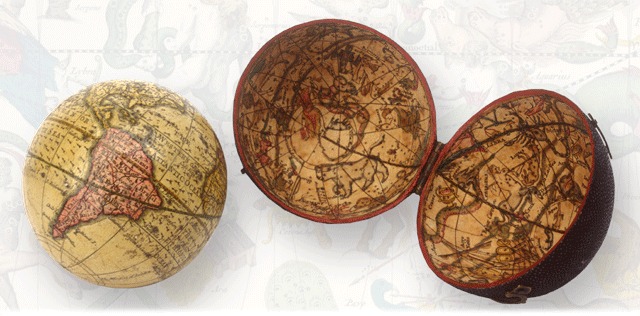Location
Palais Mollard, Herrengasse 9, 1010 Vienna
globen@onb.ac.at
Opening Hours
Summer Opening Hours (June, July, August, September)
daily 10 a.m. – 6 p.m. , Thurs. 10 a.m.-9 p.m.
Journey around the world in one day: The Globe Museum of the Austrian National Library is the only one of its kind in the world. You can see there valuable golbes of the earth and the sky, globes of earth’s moon and various planets, but also instruments in which globes are an integral part, such as planetariums, telluriums, and lunariums.
The main focus of the approximately 700 globes in the collection is on the objects made before 1850, of which the Museum hosts the world’s second biggest collection after those of the National Maritime Museum in Greenwich (UK). The permanent exhibition introduces visitors to globes as specific forms of cartographic expression as well as to globes as aesthetic and precious objects, exemplary in their artistic quality and high craftmanship. Individual aspects of the study of globes are particularly stressed: the history of the globes, their construction, the range of topics presented on them, but also questions relevant to the history of culture, such as the application of globes and their reception. Using chosen examples you can trace the development of geographic and cosmographic concepts and knowledge in past centuries.
In the „Collector’s Gallery” long-term loans from important private collections in Vienna are shown. You can also see the oldest globe to be found in Austria, the earth globe of the Dutch scholar Gemma Frisius – a unique work from 1536. It documents in surprising detail geographical knowledge after the great discoveries, but it also exhibits speculative elements such as a gigantic southern continent.
However, the Museum does not display only three-dimensional objects. Digital presentations and interactive media stations show fascinating links between the precious old objects that cannot be touched and modern means of conveying information – e.g., how a digital earth globe can be superimposed on the globes from various epochs.
With its geographical mobjects from the past centuries the Globe Museum offers an unforgettable journey through time and place.

